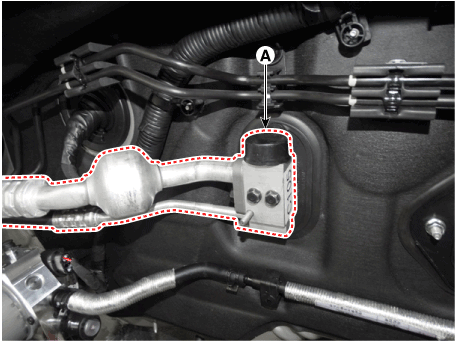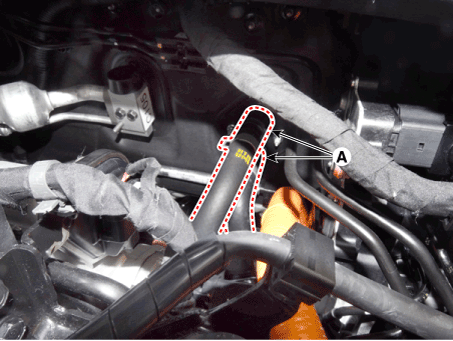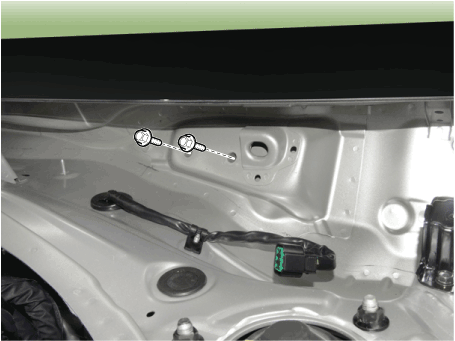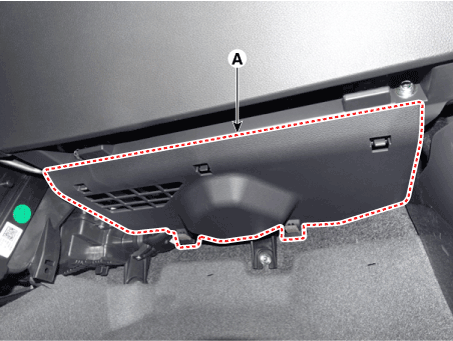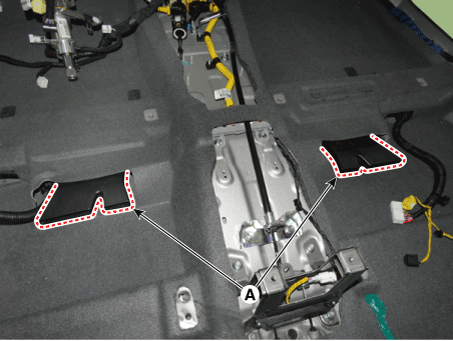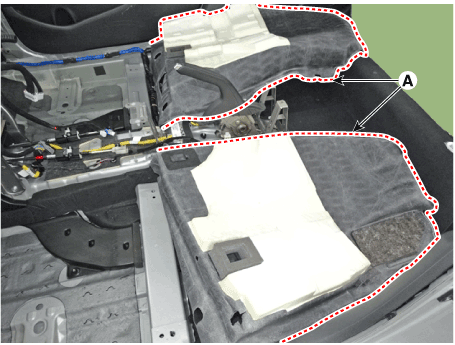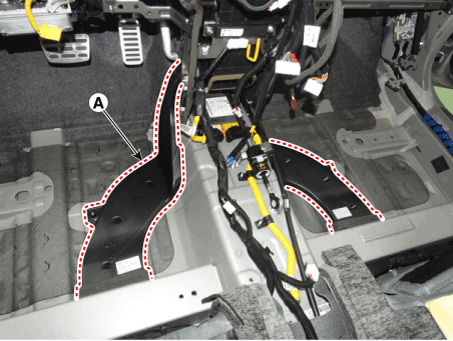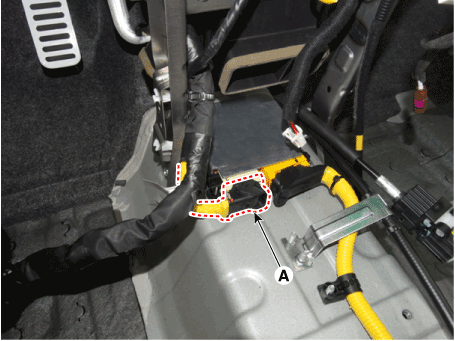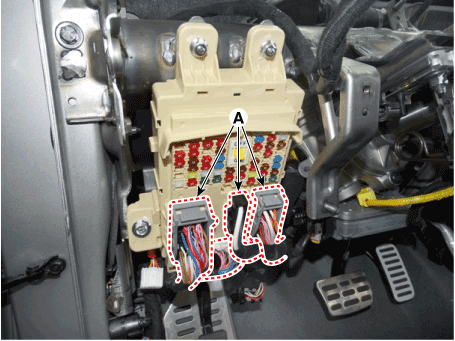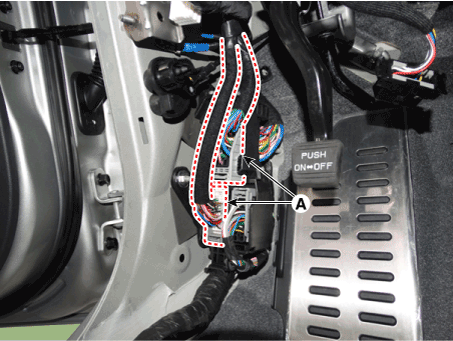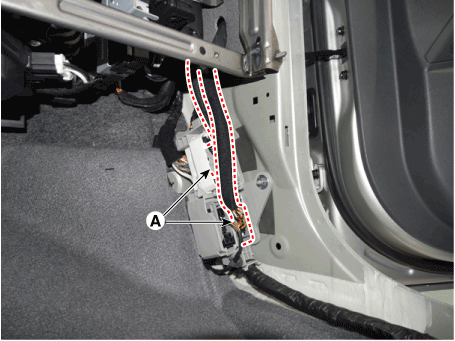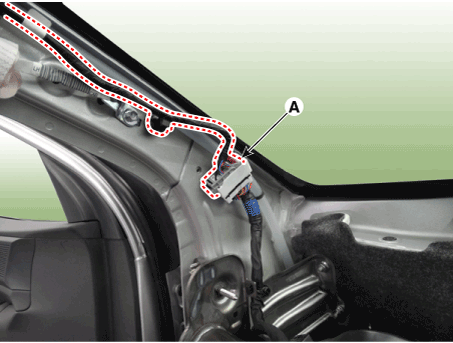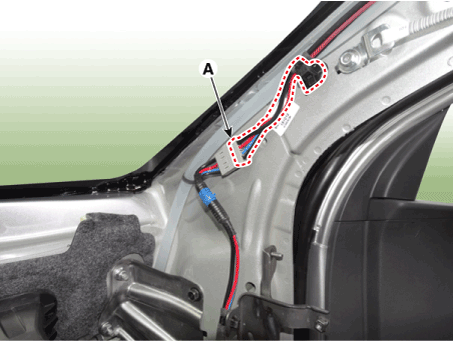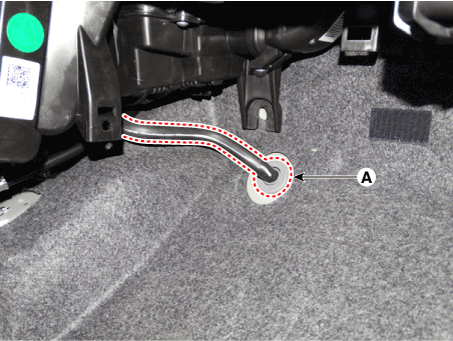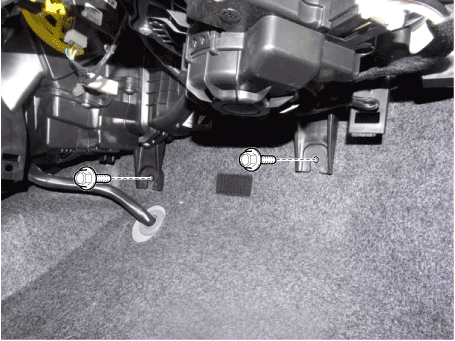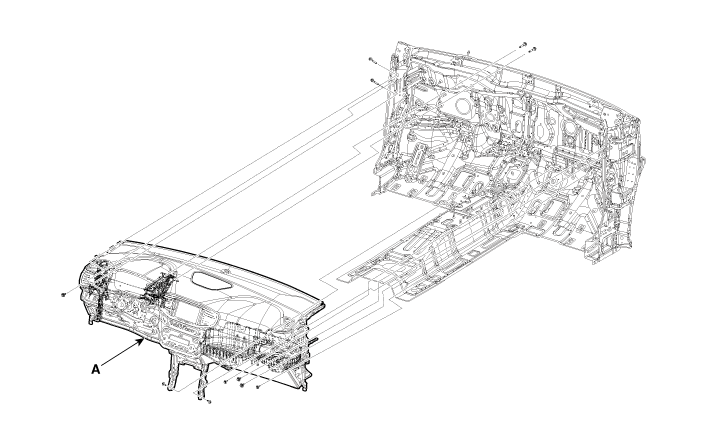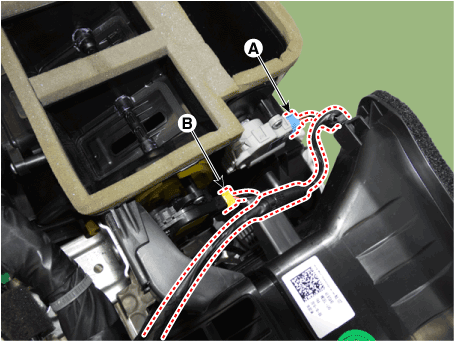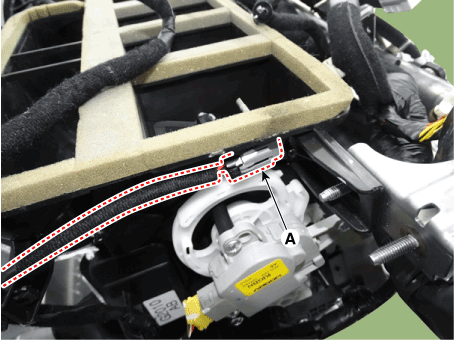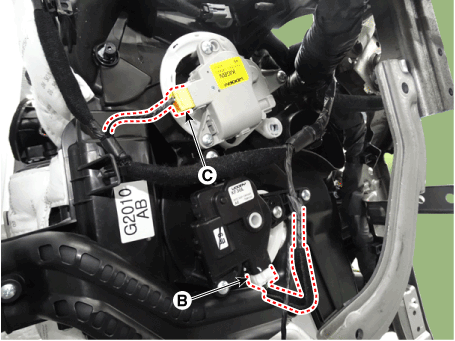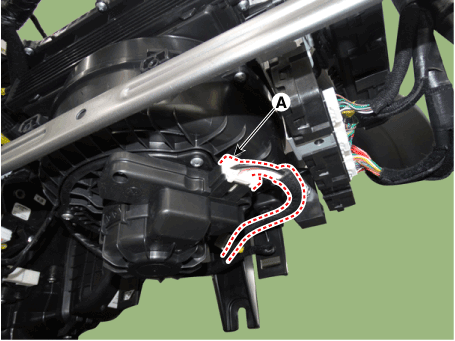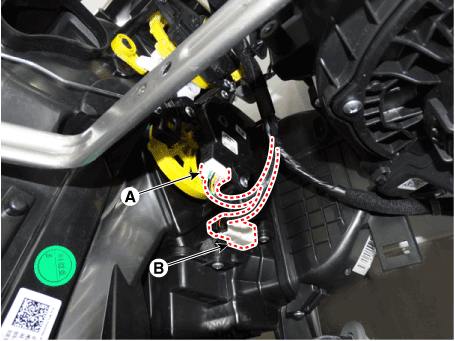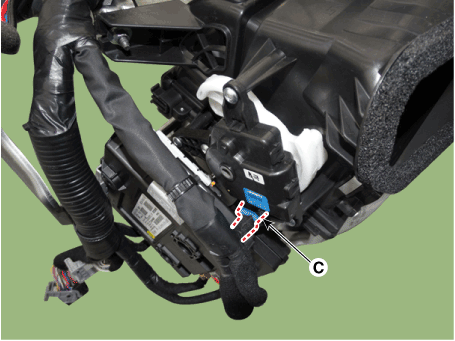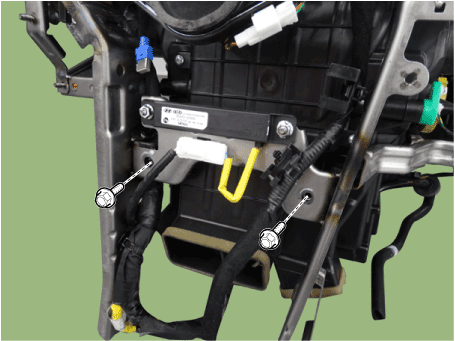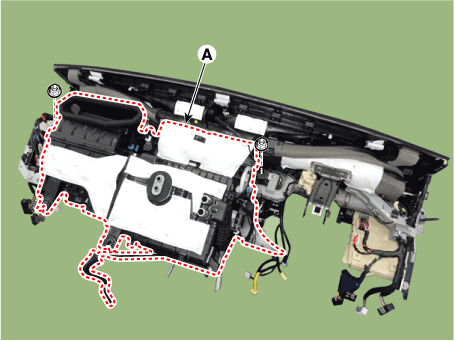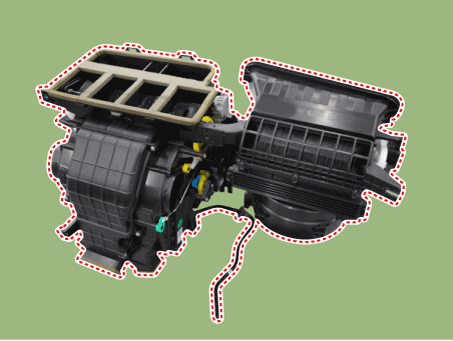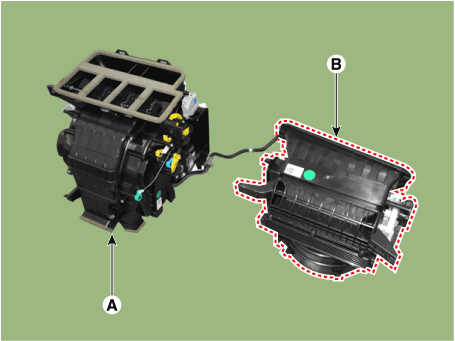Hyundai Ioniq: Blower / Blower Unit. Repair procedures
Hyundai Ioniq (AE) 2017-2025 Service Manual / Heating, Ventilation and Air Conditioning / Blower / Blower Unit. Repair procedures
| Replacement |
When prying with a flat-tip screwdriver or use a prying trim tool, wrap it with protective tape, and apply protective tape around the related parts, to prevent damage. |
| 1. | Disconnect the negative (-) battery terminal. |
| 2. | Recover the refrigerant with a recovery / recycling / charging station.
|
| 3. | When the engine is cool, drain the engine coolant from the radiator. (Refer to Engine Mechanical System - "Coolant") |
| 4. | Remove the cowl top cover. (Refer to Body - "Cowl Top Cover") |
| 5. | Remove the bolts and the expansion valve (A) from the evaporator core.
|
| 6. | Disconnect the heater hoses (A) from the heater unit.
|
| 7. | Loosen the cowl cross member mounting bolts.
|
| 8. | Remove the floor console assembly. (Refer to Body - "Floor Console Assembly") |
| 9. | Remove the crash pad lower panel. (Refer to Body - "Crash Pad Lower Panel") |
| 10. | Remove both sides of the front pillar trim. (Refer to Body - "Front Pillar Trim") |
| 11. | Remove the cowl side trim. (Refer to Body - "Cowl Side Trim") |
| 12. | Remove the steering column shroud lower panel. (Refer to Body - "Steering Column Shroud Panel") |
| 13. | Remove the steering wheel. (Refer to Steering System - "Steering Wheel") |
| 14. | Remove the multifunction switch. (Refer to Body Electrical System - "Multifunction Switch") |
| 15. | Lower the steering column after loosening the mounting bolts. (Refer to Steering System - "Steering Column and Shaft") |
| 16. | Remove the shift lever assembly. (Refer to Automatic Transmission System - "Shift Lever") |
| 17. | Remove the crash pad under cover [RH](A).
|
| 18. | Remove the rear air duct (A).
|
| 19. | Separate the floor carpet (A) to obtain space for removing the rear heating duct.
|
| 20. | Loosen the mounting nuts and remove the front air duct (A).
|
| 21. | Disconnect the airbag control module (SRSCM) connector (A).
|
| 22. | Disconnect the junction box connectors (A).
|
| 23. | Disconnect the multi box connectors (A). [Driver's side]
[Passenger's side]
|
| 24. | Disconnect the connectors (A) and the mounting clips in the front pillar. [Driver's side]
[Passenger's side]
|
| 25. | Remove the drain hose (A).
|
| 26. | Loosen the cowl blower unit mounting bolts.
|
| 27. | After loosening the bolts and nuts remove the main crash pad and cowl cross bar assembly (A) together.
|
| 28. | Disconnect the heater & blower unit connectors.
|
| 29. | Loosen the heater & blower unit mounting bolt (A).
|
| 30. | Remove the heater and blower unit (A) from the crash pad after loosening the mounting nuts.
|
| 31. | Separate the blower unit (B) from the heater unit (A) after loosening the screws.
|
| 32. | To install, reverse the removal procedure. |
 Blower Unit. Components and components location
Blower Unit. Components and components location
Component Location1. Blower unit assembly Components1. Duct Seal2. Intake duct case3. Air intake door assembly4. Intake door5. Seal6. Intake duct case (A)7...
 Blower Motor. Repair procedures
Blower Motor. Repair procedures
Inspection1.Connect the battery voltage and check the blower motor rotation.2.If the blower motor does not operate well, substitute with a known-good blower motor and check for proper operation...
Other information:
Hyundai Ioniq (AE) 2017-2025 Service Manual: Rear Seat Belt Retractor. Repair procedures
Replacement • When installing the belt, make sure not to damage the retractor. 1.Remove the rear pillar trim.(Refer to Interior Trim - "Rear Pillar Trim")2.After loosening the mounting bolt, remove the rear seat belt lower anchor (A)...
Hyundai Ioniq (AE) 2017-2025 Owner's Manual: Seat Warmers
Front seat warmers (if equipped) Seat warmers are provided to warm the seats during cold weather. WARNING The seat warmers can cause a SERIOUS BURN, even at low temperatures and especially if used for long periods of time. Passengers must be able to feel if the seat is becoming too warm so they can turn it off, if needed...
Categories
- Manuals Home
- 1st Generation Ioniq Owners Manual
- 1st Generation Ioniq Service Manual
- Smart Cruise Control System
- Tilt Steering / Telescope Steering
- Temperature control
- New on site
- Most important about car
Hybrid Vehicle Interior Overview
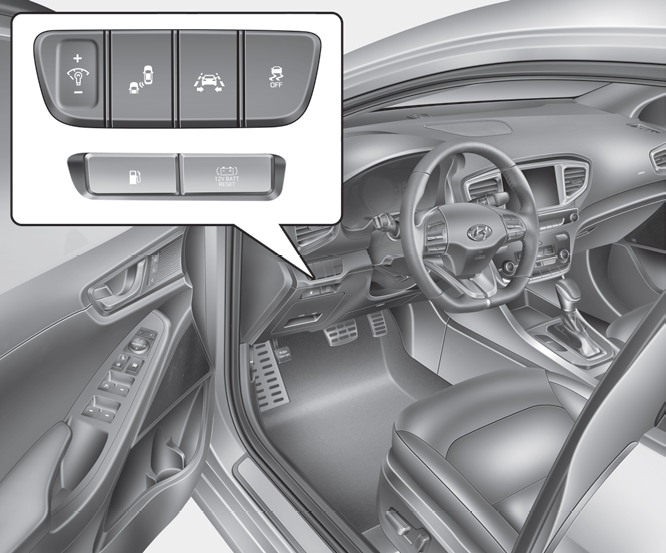
1. Door lock/unlock button
2. Driver position memory system
3. Side view mirror control switch
4. Central door lock switch
Copyright © 2025 www.hioniqae.com



